
Jim and Mia with their new devotional stupa at the Camp John Hay picnic.
Jim is holding scrolls of sacred text that will go inside the stupa.
28 February Baguio
I had a window seat as the Airbus A320 took off for the
3-hour, 20-minute flight into the night skies of Singapore, then turned
northeast over the dark waters of the South China Sea to Manila. My flight’s
scheduled departure time of 1:10 a.m. was very convenient because it gave me all
of Thursday to enjoy Singapore, then get to the airport. An early Friday morning
arrival in Manila then made it easy to catch a bus north to the university town
Baguio in the Cordillera the same day. Everything went easily at the airport: I
got in the short immigration line for seniors to get a free entry permit for 31
days (I’ll be in the Philippines 30 days.), picked up my bag, obtained 10,000
pesos at an ATM, bought a 30-day SIM card from Smart, and connected with a Grab
taxi for the short ride to the Genesis bus station in Pasay. There I paid 500
PHP for a ticket on an air-conditioned bus to Baguio that would be leaving in
just 30 minutes at 7 a.m. The trip took just over five hours, slowly working
through Manila’s messy traffic congestion, speeding across the plains on
expressways, then twisting high into the Cordillera before dropping to central
Baguio at an elevation of 1,540 meters. Sunshine ruled today with a few puffy
little clouds hanging about the highest peaks and a bit of haze in the lowlands.
For breakfast I had only the cashew nuts and a chocolate bar bought at Changi
Airport with my last four Singapore dollars, so on arrival in Baguio I made a
short walk to Session Road, where I climbed to the top floor of La Azotea
Building for the artsy vegetarian restaurant ‘Oh My Gulay!’ and a lunch of hot
cocoa and a vegetable rice dish topped with a strip of omelet. (Gulay means
‘vegetable’ in the Philippines national language of Tagalog.)
Afterward
I easily caught an inexpensive metered taxi (100 pesos or $2) to my downstairs
room in the home of Jim and Mia Bliss, whom I had met through Airbnb last year. Jim, a retired American who has spent nearly his entire adult
life working overseas, loves cycling and is very active in promoting the
activity in Baguio. His Filipina partner Mia works online. They’re both
excellent cooks and ran a gourmet vegetarian café for many years in Baguio. Each
evening I joined Jim and Mia for a superb home-cooked vegetarian dinner, then
one of them would bring a continental breakfast to my room in the morning. I had
looked forward to a flower festival parade in Baguio this weekend, but it had
been postponed one month due to concerns over the coronavirus. Instead I would
spend my days here sightseeing, going for walks, and catching up on photo
sorting and journal writing.
In 2019 I cycled extensively in the
Philippines on a 3,400-kilometer ride, starting with a loop out of Baguio that
dropped to the west coast of northern Luzon, continued around the north coast,
then turned inland through the challenging mountain roads of the Cordillera back
to Baguio. Next I rode south from Baguio and made a detour for a hike up the
volcano Mt. Pinatubo then rode up Mt. Samat on the Bataan Peninsula. From Manila
I continued south to Batangas, where I began ferry hopping and cycling through
the Visayas and other islands to Legazpi in Southeast Luzon and the end of the
ride. Story and photos are at
www.crazyguyonabike.com/doc/PhilippinesRide2019.
29 February Baguio
I devoted this leap-year day to photo and journal projects.
1 March
Baguio
Jim and Mia had recently made friends with another American-Filipina
couple, Ken and Minda, who have recently retired and plan to build a house
together in Baguio. All five of us got together for a picnic under the pine
trees at Camp John Hay, an American military site established in 1900 during the
Philippine-American War and used until turned over to the Philippine government
in 1991. Now it’s a popular recreation area. Ken and Minda had just returned
from Nepal and brought back a small Buddhist devotional stupa for Jim and Mia,
who follow Buddhism.

Jim and
Mia with their new devotional stupa at the Camp John Hay picnic.
Jim is
holding scrolls of sacred text that will go inside the stupa.
2 March Baguio
I took a jeepney, the Jeep-style vehicles with bench
seating so beloved in the Philippines—into the center and walked around the lake
in the large Burnham Park, detouring into the plant nurseries to admire the
colorful orchids and other flowers. Jim told me about Ronda Pilipinas, the
annual bicycle stage race that would be arriving at today’s finish line in the
park. Race officials estimated a 2 p.m. arrival by the cyclists. In the meantime
I climbed up to Oh My Gulay restaurant on Session Road for a lunch of pancit (a
noodle dish) and a Caesar salad. Afterward I entered the big SM City Baguio
Mall, had a Krispy Kreme donut, then ascended to an observation deck with a fine
view of the city and its many hills. Back at Burnham Park I watched a few
stragglers come in, then stayed to watch the awards ceremony for the top three
winners of today’s 177.1-kilometer eighth stage, followed by presentations of
jerseys and medals to winners of King of the Mountain and three other
categories. I walked around central Baguio, then caught a jeepney back to my
home stay.
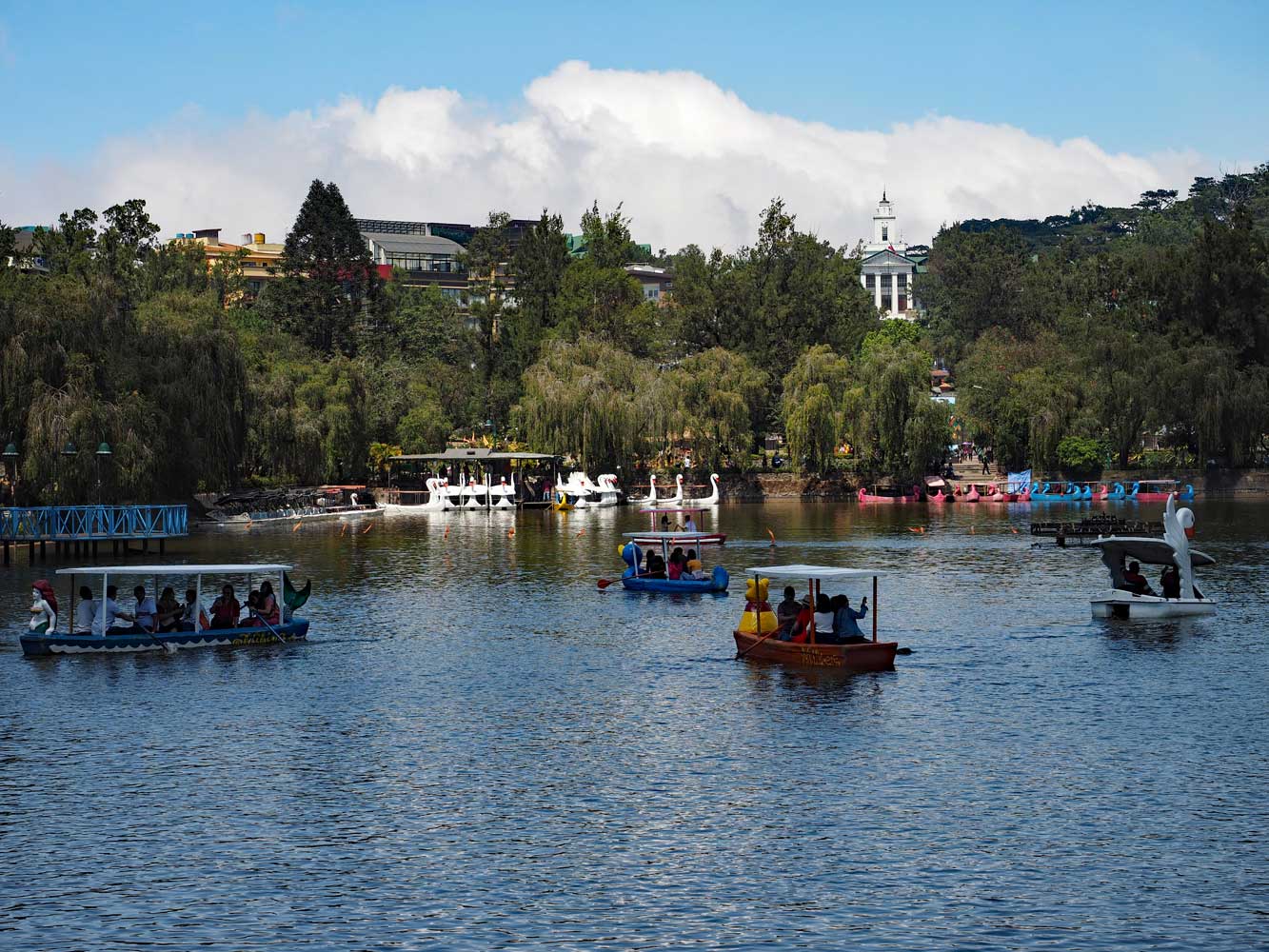
Burnham Lake is the centerpiece for popular Burnham Park.

The portal into the restaurant Oh My Gulay
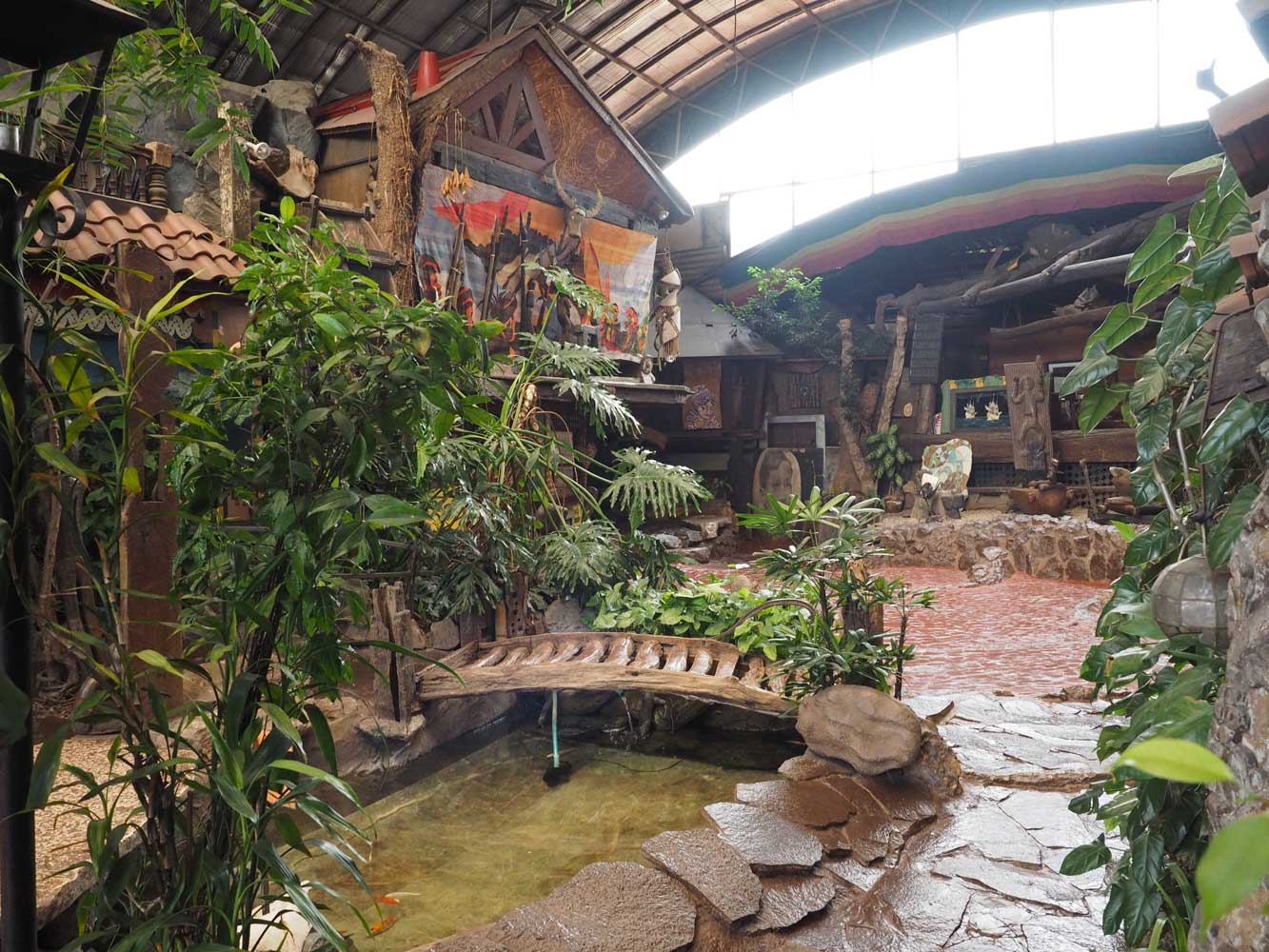
Lots of art and oddities went into the decor for Oh My Gulay!

It has two levels and a fish pond.
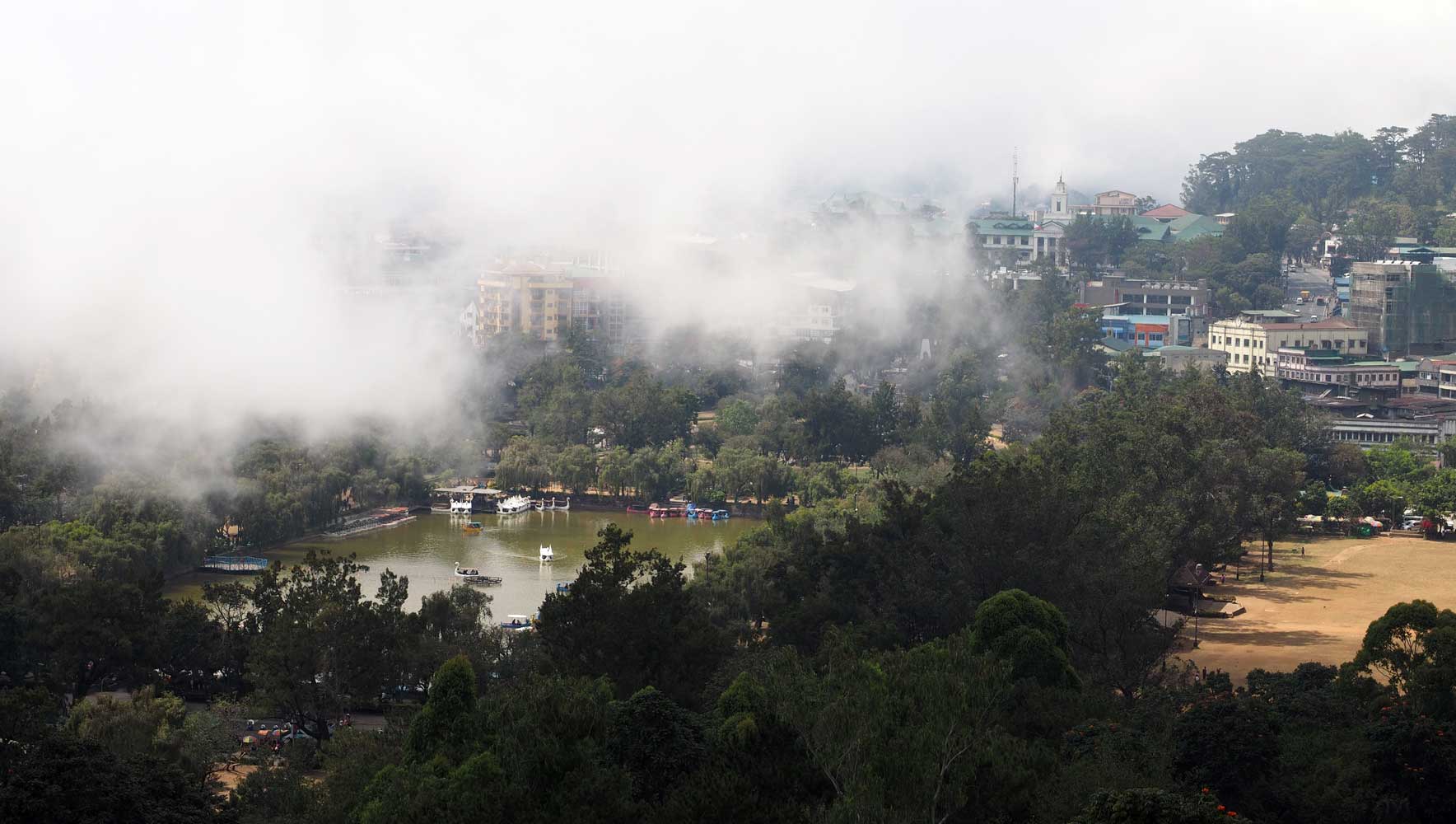
Afternoon clouds drift over Burnham Park in this view from SM City Baguio
Mall
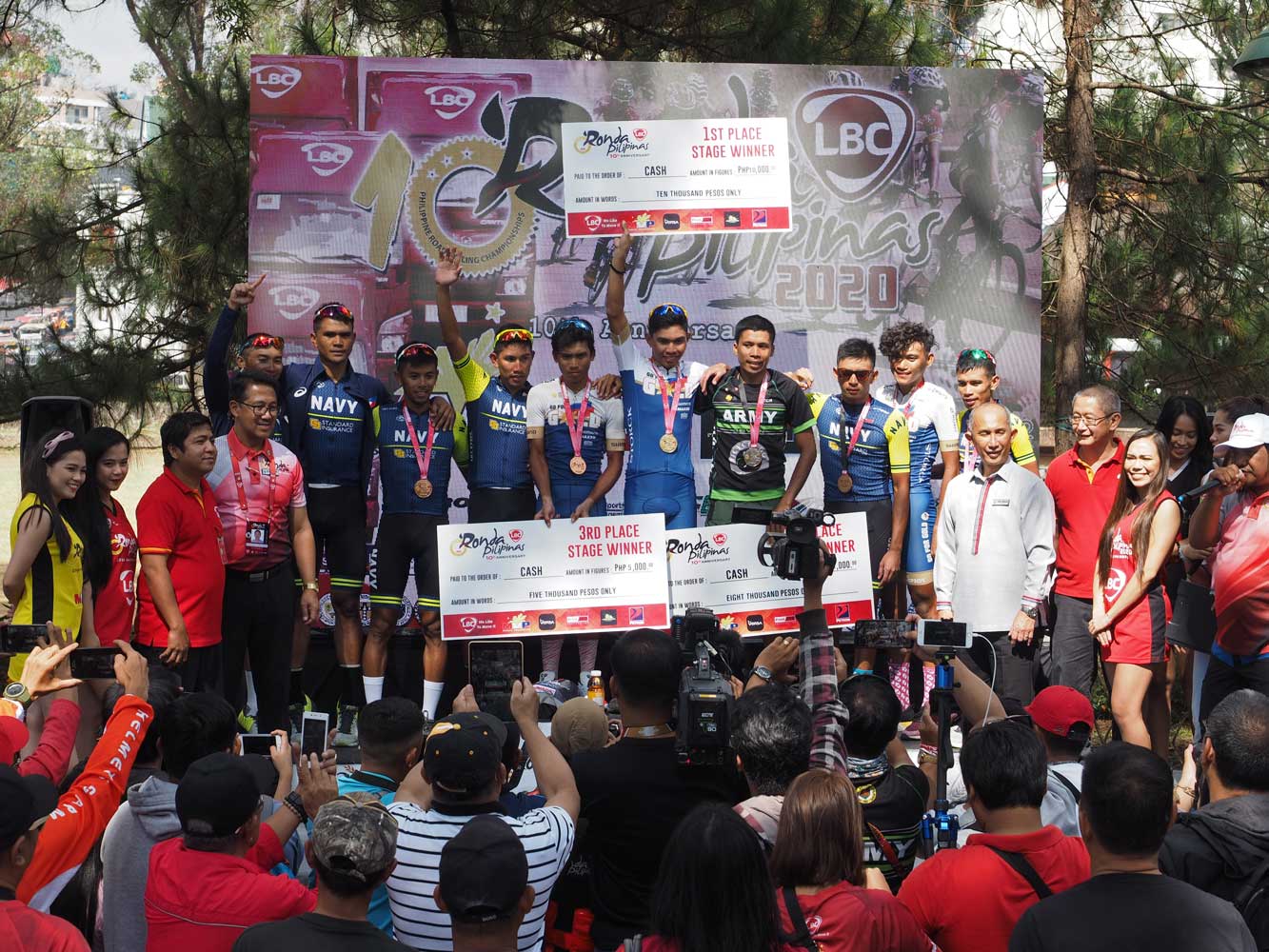
A very happy cyclist takes 1st place for the Ronda Pilipinas stage today.
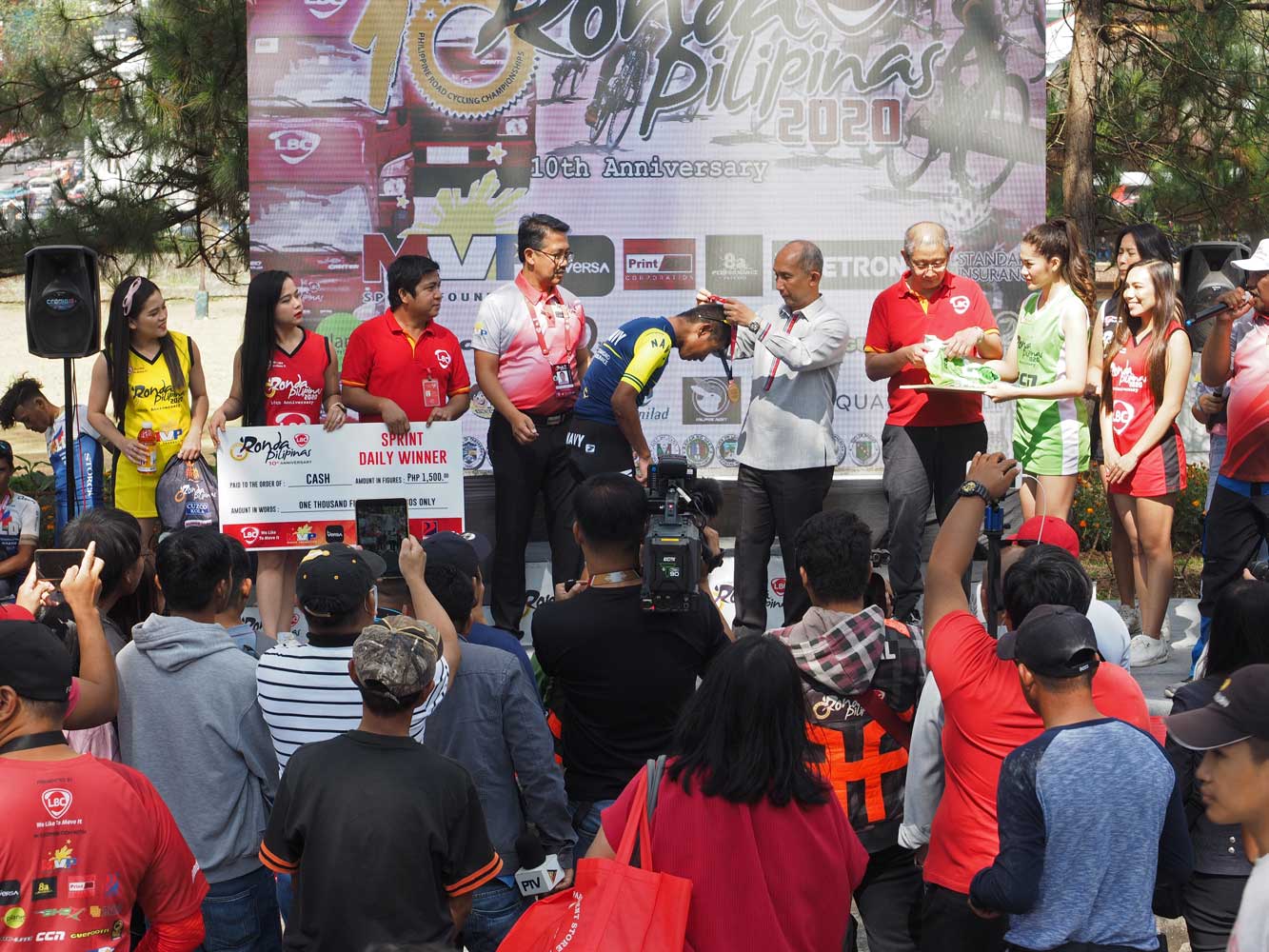
This fellow got a medal and green jersey for winning today’s sprint.

And the King of the Mountain
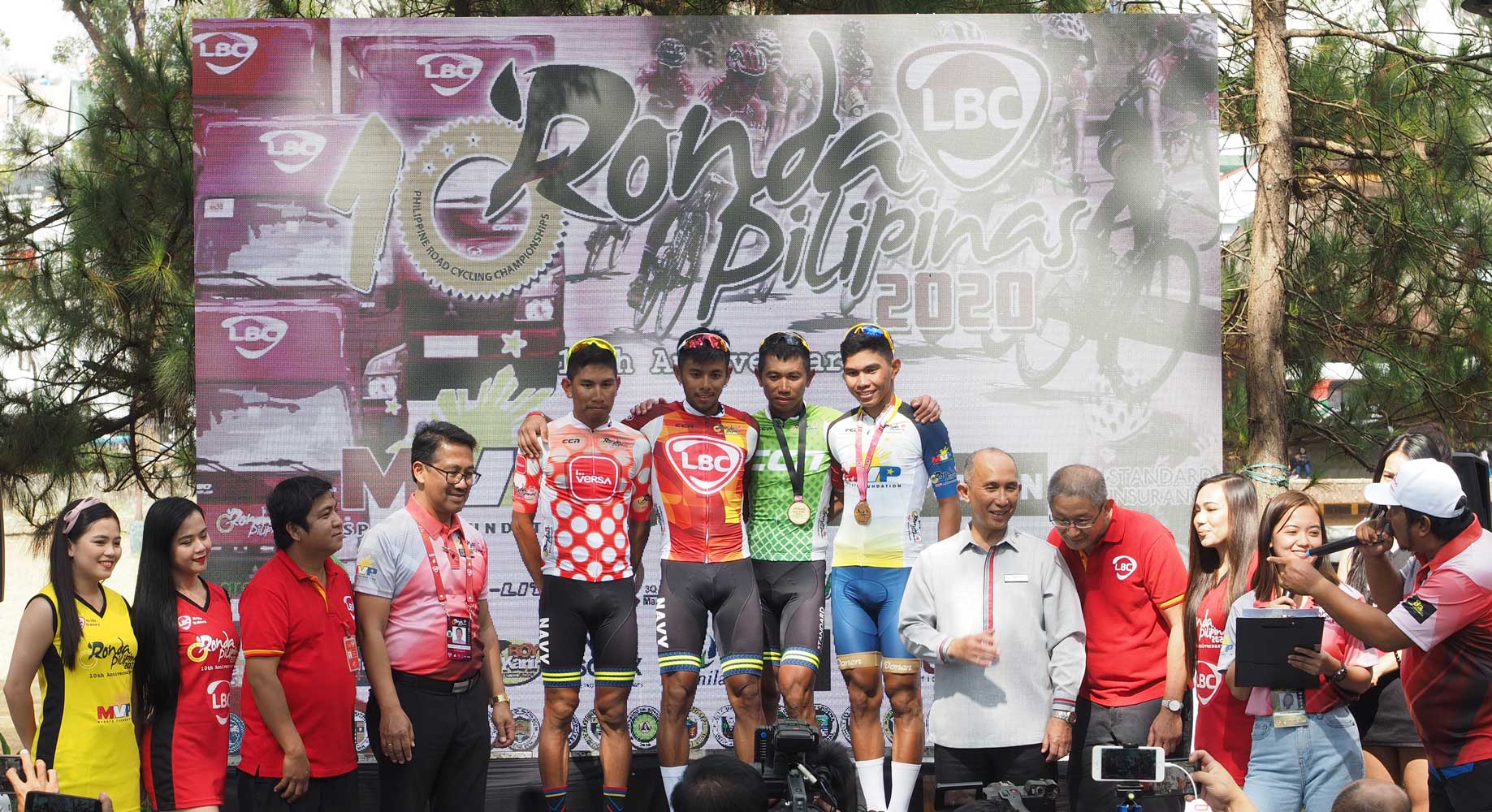
The category winners with their new jerseys

Local cyclists drop by, then pose for a photo.
3 March Baguio
Jim had told me that the power would be out for maintenance
from 9 a.m.-5 p.m. today. I worked on sorting photos until my computer battery
gave out, then caught a jeepney into the center and lunch at Oh My Gulay, this
time an open-faced sandwich of breaded-eggplant and tomato sauce. Baguio has
several museums, and I headed to a pair that I hadn’t seen before. Only the main
floor was open at Baguio Museum because of reconstruction work going on, yet
that had a lot to see with artifacts and dioramas of the Cordillera hill tribes,
even including a mummy.
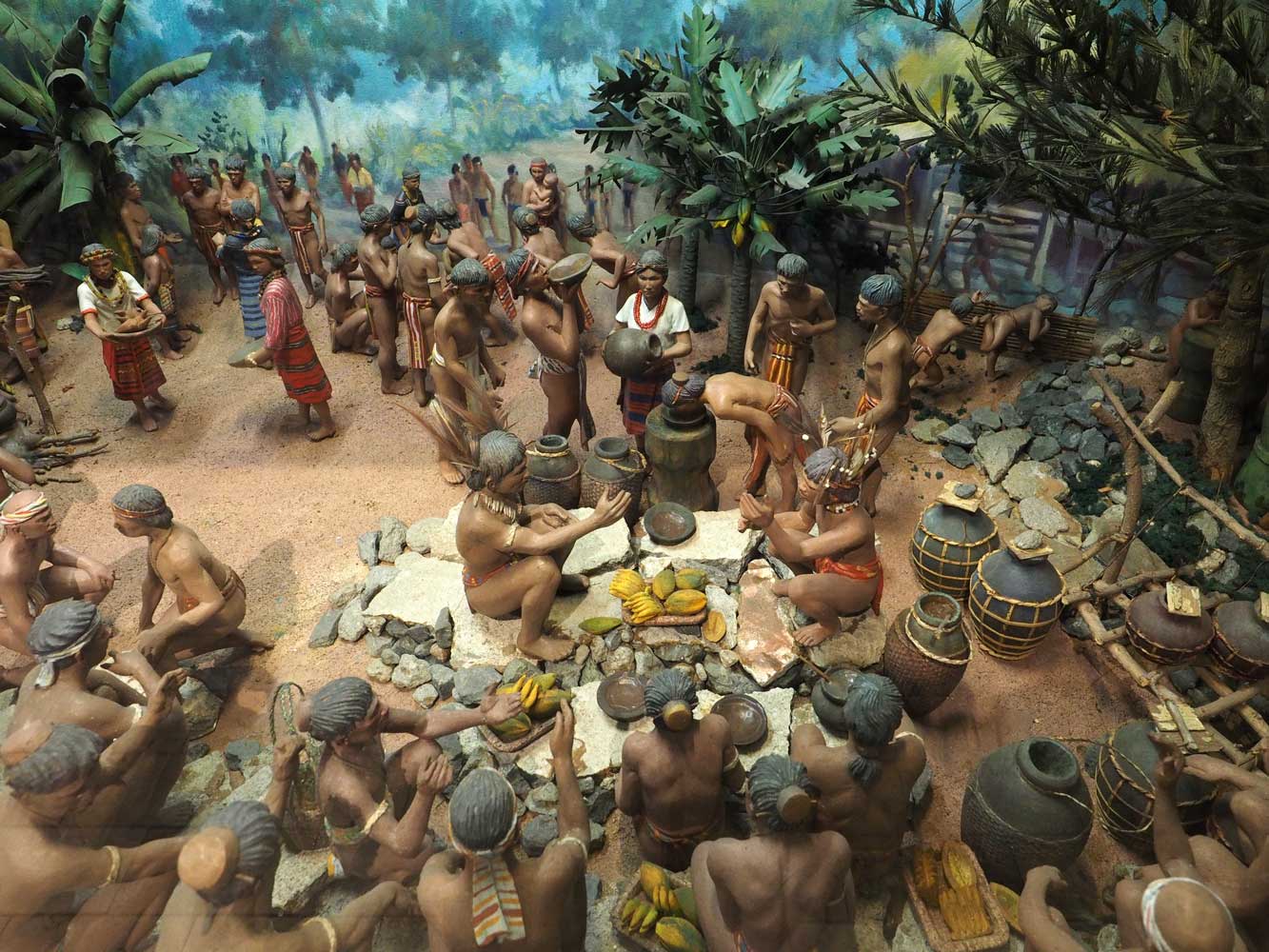
Celebration
of the Bodong people
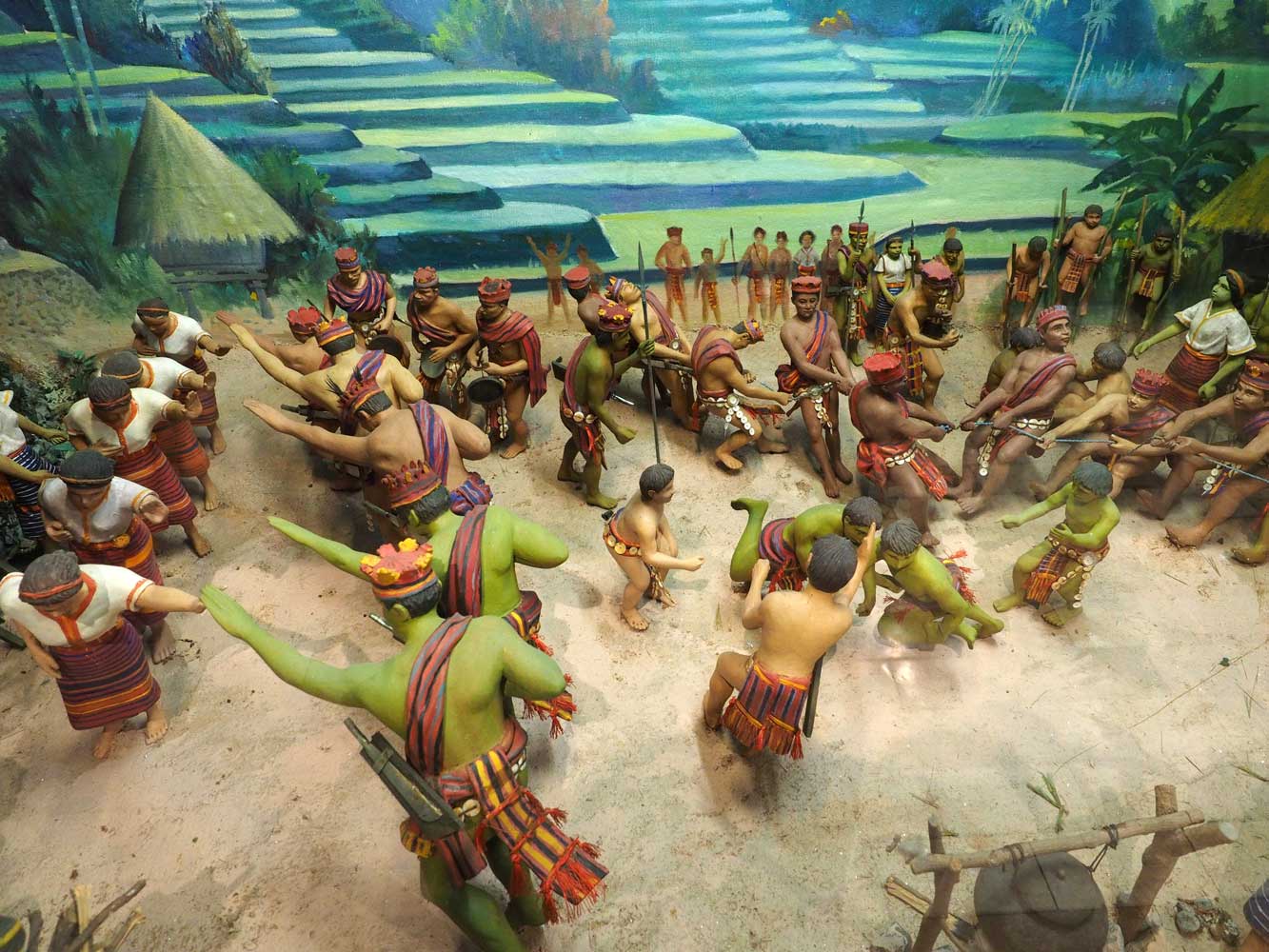
Merriment by the Imbayah people

Solibao, a ritual drum played during Ibaloi fiestas
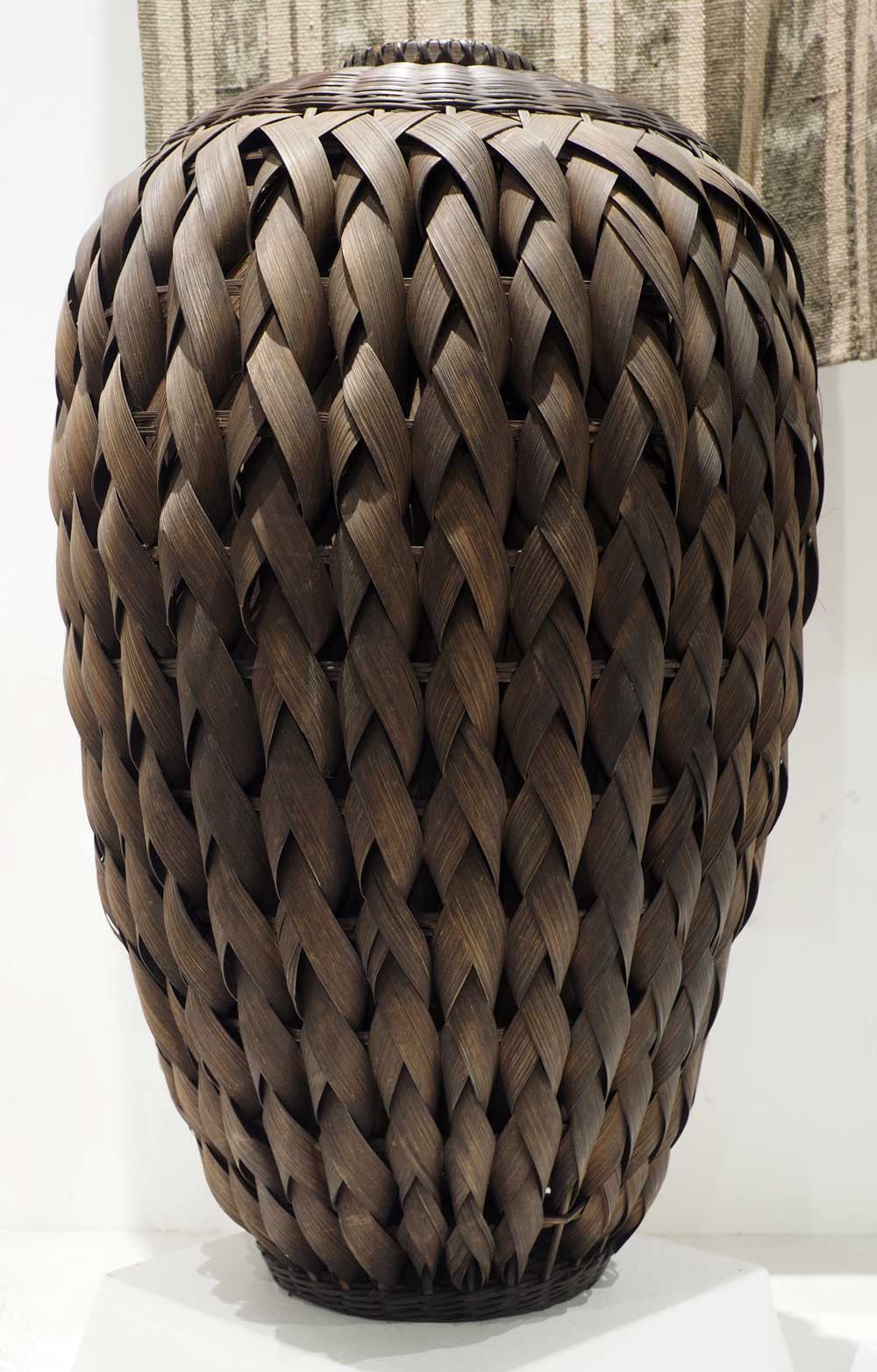
Locust basket made of rattan by the Ifugao people
Nearby Museo Kordilyera, on the University of the Philippines Baguio campus, specializes in the colorful textiles of the hill tribes, all beautifully displayed along with looms and spinning wheels. Videos showed the dyeing and other steps of producing the yarn. Mannequins and old photos illustrated the men with their G-strings and women with wrap-around skirts. I got a taxi back home.
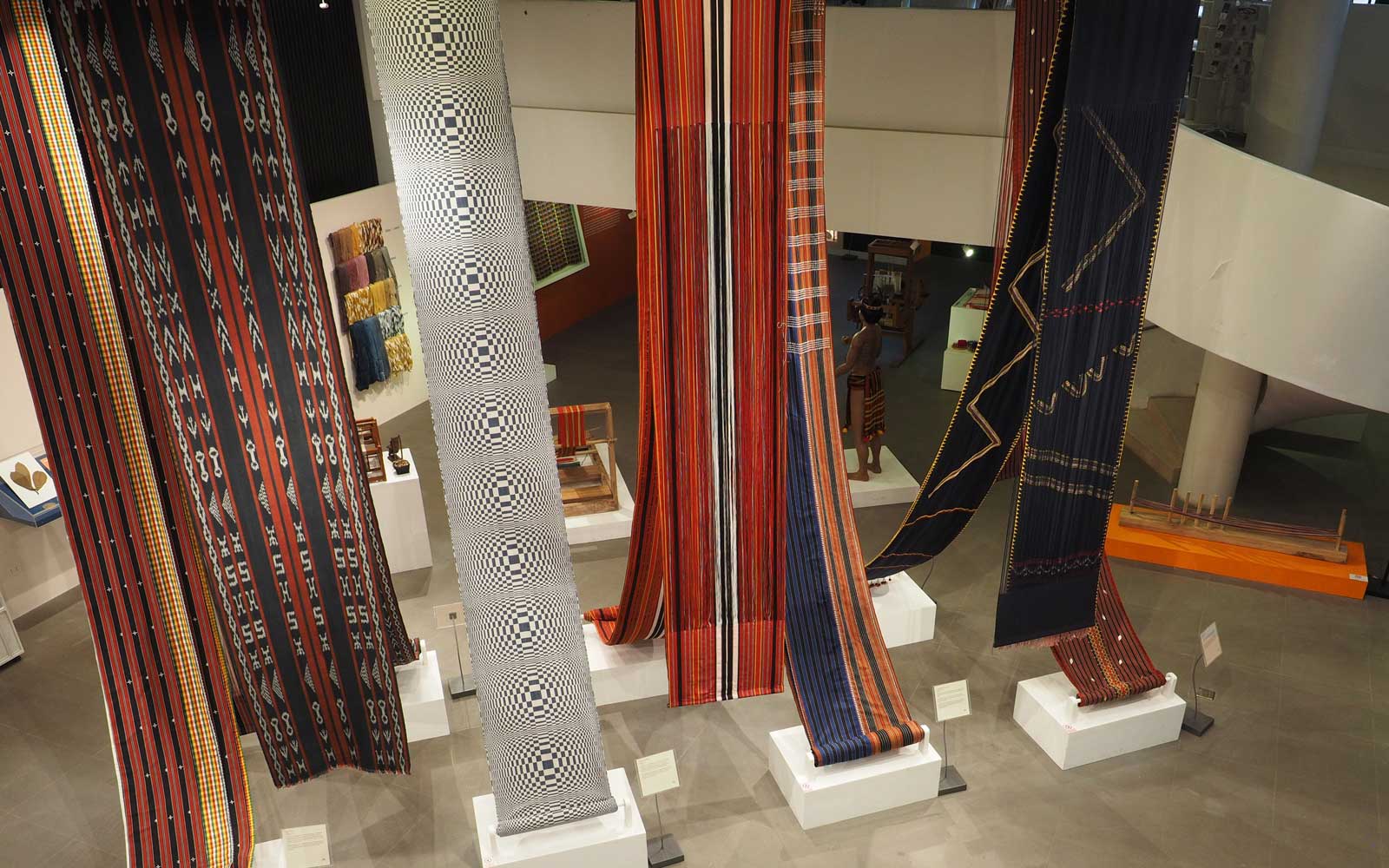
Dramatic textiles come into view as one descends the stairs to the main
level of Museo Kordilyera.

The binakol (blanket) of the Tingguian people can be in whirlpool,
whirlwind, cat’s paw, or fan designs.
The dizzying effect of the binakol
when waved during ritual occasions is meant to confuse malevolent spirits.
Benevolent spirits, on the other hand, can pass through irregularities in the
blanket design.
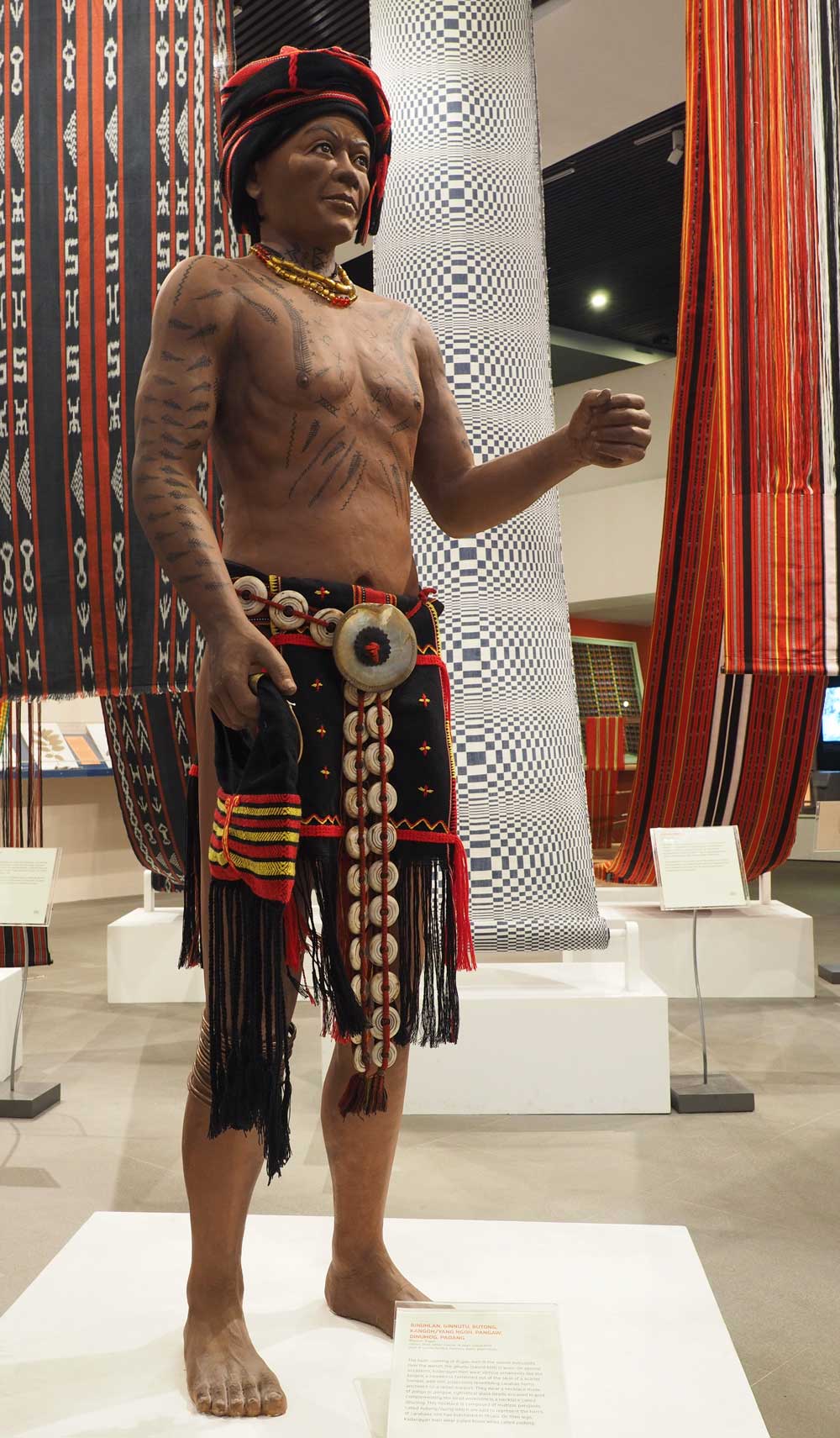
Ifugao men traditionally wore a loincloth and sword belt, then on special occasions adorn
themselves with decorations such as a headdress, necklace, and coiled brass leg
wires.
4 March Baguio
Another guest had a reservation for the home stay tomorrow,
so this would be my last full day here. I read newspapers of Baguio and Manila,
then switched to the internet for the latest U.S.A. Democratic primary election
news. I then sorted through the many Singapore photos that I had taken.
On to the Philippines—Part 2: High in the Cordillera
Back to beginning of “Backpacking 2020: India, Singapore, and Philippines”